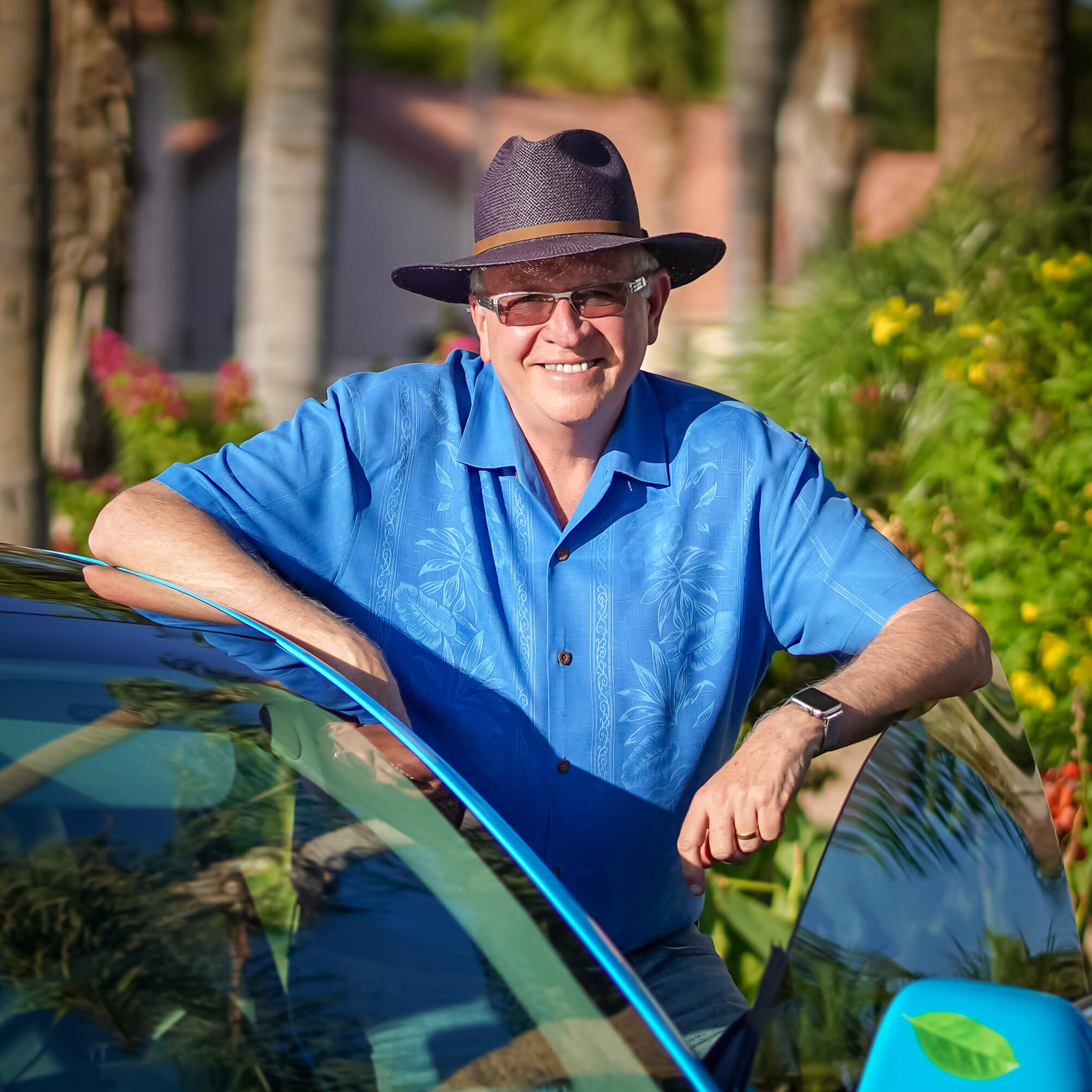
By John S Martinson
Battery Electric Vehicles
In 1998, I leased my first battery electric vehicle (BEV), a General Motors EV1 Gen II. To unlock the car, I entered a personal identification number (PIN) on a keypad on the driver’s door and again on the center console to drive it. The interior design was reminiscent of Star Trek.
Though sufficient for my daily commute, errands and entertainment, the EV1 was not built for out-of-town driving, with a range of only 70 miles and no highway charging infrastructure. I loved driving it and being one of the only 1,100 EV1 “owners.” I liked that I could charge it at home and at convenient public chargers at Sky Harbor Airport, Scottsdale Fashion Square, Biltmore Fashion Park, and at APS headquarters in downtown Phoenix. It was my sole daily driving car for three years.
Tesla Model S
I bought my first Tesla, an early Model S, in 2013. It had substantially more range than the EV1, and Tesla’s network of fast-charging Superchargers throughout the country made it ideal for weekend trips. Last summer, I took my son on a 31-day, 6,471-mile road trip in a 2018 Tesla Model 3. We drove from Phoenix north through the Colorado Rockies, Teton, Yellowstone and Glacier National Parks, up to Jasper, Alberta, Canada, across British Columbia to Whistler, and south along the Pacific Coast all the way to San Diego before returning to Phoenix. Between the Tesla Superchargers and Tesla’s Destination Charger network at hotels and inns, we were able to drive our entire route effortlessly with no range anxiety, costing us just $234 for electricity.
Owning is Effortless
Operating a Tesla semi-autonomous electric vehicle is almost effortless. One just approaches the car and it unlocks (key is in your pocket or purse). You sit, touch the brake and the car is on—no need to present a key. When you arrive at your destination, you simply place the car in PARK and exit, whereupon the car locks itself. Plugging in at home every night means the car is fully charged and ready to go every morning.
Autopilot Technology
Tesla’s Autopilot technology, where the car semi-autonomously steers, brakes, changes lanes, maintains highway speeds, and even exits, makes highway driving less stressful and safer. However, one must still keep one’s hands on the steering wheel and stay alert. I drive with Autopilot engaged 80% of the time when I am on highways, and even sometimes on rural roads.
The Oopsies
This is all very cool technology, but it can present various challenges if you have to also drive what I call a “fossil” (standard fossil fuel-powered internal combustion engine vehicle).
Some years ago, I rented a fossil on a business trip and drove from the airport to my meeting destination. After a three-hour meeting, I returned to the car and found it still running on idle with the air conditioning on. Oops.
Another time, while my Model S was at a body shop, I was driving a rented fossil when the car ran out of gas in the middle of a heavily traveled road during morning rush hour. Oops.
And then there was the time my Autopilot was on the blink and I had to drive from Prescott to Phoenix down Interstate 17, requiring me to manually maintain speed and keep in my lane. I had nearly forgotten how to drive. Oops.
I spend a fair amount of time interacting with other Tesla owners across the country on social media and have found that these lapses are quite common. As society transitions to electric vehicles and autonomous driving, one must watch out for the oopsies.
For more reading on John’s Tesla roadtrip, follow this link here.
Learn more about John S Martinson on his website.





